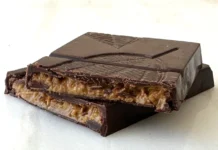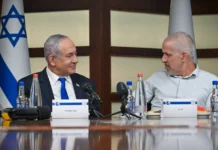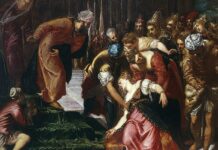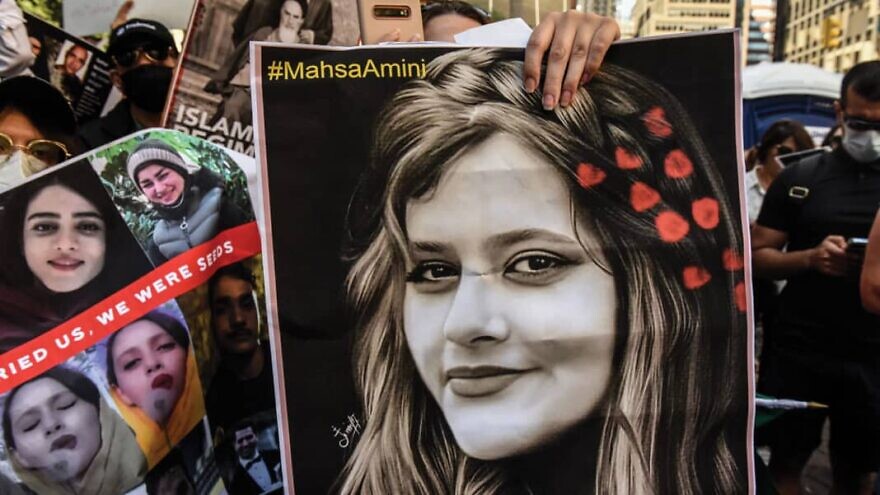Massive protests have been raging across Iran since ethnic Kurdish woman Mahsa Amini died in the hospital following a beating by the regime’s morality police—a claim the authorities deny despite eyewitness statements to the contrary.
Sayeh Saadet, who is Jewish, grew up in Iran during the 1979 Islamic revolution that propelled the ayatollahs to power. She said of the protests, “The anger has been building up for 43 years. People are getting more and more frustrated by the minute. The Mahsa Amini incident in September was only ‘the last straw that broke the camel’s back.’”
“The oppression began very young,” she stated. “Often in school they would search our bags to see if we had items other than our school textbooks that they perceived as a threat. School finished at 2 p.m.; from 2 to 3, morality police would be out there with their vans to harass us. They would stop and reprimand us harshly if they felt we were doing something they didn’t approve…I once got yelled at because they said my veil wasn’t covering my hair enough. We would apologize and get let off. But the girls who talked back were arrested.”
Saadet is hardly the only Iranian woman who feels that the regime’s culture of misogynist oppression has become intolerable.
She said of Iranian women, “In addition to the compulsory headscarf, they are not allowed to practice certain professions, their testimonies in court are only half as valid, there are clear disadvantages in marriage and divorce law, etc. There is discrimination on a social level. As a human rights organization, we also report on femicides or suicides as a result of oppression by their own male relatives. The list is exhaustive.”
Belonging to ethnic and religious minorities only compounds the problem, Alxas said. “Kurdish women in Iran are subjected to ‘double the range’ of repressive measures: On one hand as female citizens and another hand as Kurds. In Iranian Kurdistan, women are legally obliged to wear a headscarf, just like the rest of the country. However, many will tell you that they don’t enforce these rules over there for the most part. This is probably because the regime fears stronger resistance here—a well known trait among Kurds. Also, the feminist movement in Kurdistan is deep-rooted and this was notable in the Syrian Civil War when we witnessed heavy Kurdish resistance to ISIS.”
Saadet said, “It is hard for everyone—even for Muslim men. But being a woman and being Jewish, that was two extra layers of difficulty. I’m Jewish, but I went to a Muslim-majority school. But I know that they forced Jewish schools to be open on Shabbat and confiscated Judaica. Iran had antisemitism even during the Shah’s era, but after the revolution, it became more aggressive.”
“A year after they took power, the Iran-Iraq War broke out in 1980,” she continued. “Life got worse and worse for everyone. They drafted boys as young as 10 and we didn’t have bomb shelters or basic infrastructure in Iran. We were so unprepared. My family had to bribe to get us passports so we could escape to the U.S. Many Jews who migrated to Los Angeles such as myself have similar stories. I can’t think of any women no matter what religion or ethnic group who would enjoy living under these circumstances.”
Sara Ahmadi was raised Muslim and left Iran in 2005 as a teenager. She moved to Canada almost two decades after Saadet escaped Iran, but conditions in the country had not improved.
“We were compelled to wear the hijab at the age of nine,” she said. “I remember at a young age in school they strictly enforced morality. They thoroughly checked if we had nail polish or makeup, and if we were caught behaving ‘out of line’ they would call our parents. And now it has come to a point where the government isn’t even trying to hide the fact that they use violence to suppress their own citizens.”
Alxas said that Hengaw, as a human rights organization, supports “the freedoms of the people in Kurdistan and the rest of Iran.”
“We have been talking about these issues long before they received this much international attention,” she said. “There also were protests prior in 2018, when people took to the streets due to the economic situation and some regional protests only occurred within Kurdistan because of the regime’s treatment towards Kurds. This time, however, the people have realized that they are capable of bringing about change if they don’t give up.”
She added, “We have a slogan among us. As long as one Kurd still lives, Kurdistan will exist.”
Saadet said news footage of the current protests shows that “it’s mostly young women—teenage girls and university students—who are most active.”
“This is the first time in two generations that they are standing up like this,” she said. “And now it’s got more ‘normalized’ to see the girls not wearing hijabs in public and they’re doing this in protest against the regime. Most parents caution their children not to join the protests because they grew up in the culture of fear of the 1980s. But the youth say ‘we have nothing to lose.’”


























